David Suzuki's Blog, page 58
August 27, 2015
Fill out the Alberta climate survey and protect your health!
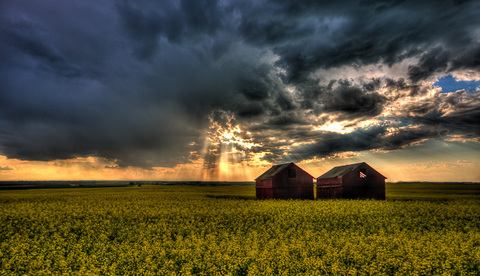
Credit: Beth Allan via Flickr
The Province of Alberta is asking citizens to help fight climate change by filling out a Climate Leadership Survey.
Participation takes only a few minutes. By completing it you can help reduce carbon pollution and improve the health of Albertans.
The survey seeks your opinion on several questions, but the most important are about a phase-out of coal-fired electricity, a new carbon tax and increased use of renewable energy. The David Suzuki Foundation has long supported these ideas, and we hope you will too.
The harm caused by coal is undeniable. In Alberta alone, coal-burning is a factor in more than 4,000 asthma attacks and nearly 100 deaths every year. We can save lives and reduce human suffering by swiftly ending its use.
Since coal also produces more carbon pollution than other fuels, a key reduction strategy is carbon pricing. Alberta already charges its largest emitters, but to facilitate a coal phase-out a higher price is needed, one that reflects the full extent of the black rock's damages to health and the environment. A new price on carbon pollution should also cover all emissions, not just those from the largest emitters
If we're going to shift away from coal, we need other sources of electricity to replace it. Fortunately, Alberta is blessed with a wide array of renewable energy options. The Pembina Institute says the province "enjoys some of Canada's most abundant and reliable renewable energy resources, including hundreds of gigawatts' worth of potential solar, wind, geothermal, biomass and hydro capacity." But this renewable energy will only be developed if the government provides incentives.
What's the payoff if we dump coal, properly tax carbon and ramp up renewables? Ontario, which closed its last coal plant in 2014 and embraced wind and solar power, is already reporting dramatic improvements in air quality, especially in major cities. It's also saving billions of dollars in health-care costs.
These tremendous benefits are available to Albertans if the provincial government shifts to a greener electricity system and a clean energy economy. These changes will only happen if enough people like you take a moment to share their views.
In addition to the online survey, public open houses will also be held in Calgary on September 1st and in Edmonton September 2nd. Thank you for filling out the Alberta Climate Leadership Survey today!
Hey! Want more DSF? Join David Suzuki on Facebook

A healthy environment nurtures healthy people
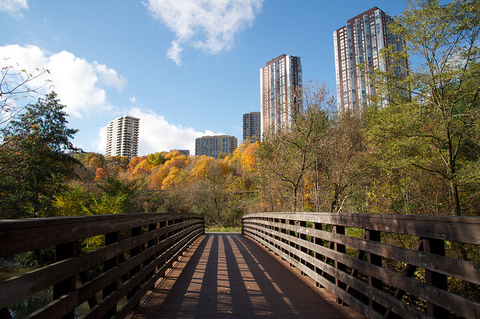
(Credit: City of Toronto via Flickr)
If a home is not cleaned and cared for, it will become rundown and less habitable or even unlivable. It's no different with our broader surroundings, from the immediate environment to the entire planet.
If we disconnect from the natural world, we become disconnected from who we are -- to the detriment of our health and the health of the ecosystems on which our well-being and survival depend.
Understanding that we're part of nature and acting on that understanding makes us healthier and happier, and encourages us to care for the natural systems around us. A growing body of science confirms this, including two recent studies that explore the ways nature benefits human health.
A Toronto-based study, published in Nature and co-authored by a team including University of Chicago psychologists Omid Kardan and Marc Berman and David Suzuki Foundation scientist Faisal Moola, examined the relationship between urban trees and human health. According to "Neighborhood greenspace and health in a large urban center", people living in areas with many trees, especially large trees, report feeling healthier than people in areas with fewer trees.
The other study, published in Ecosystem Services and co-authored by scientists from the U.S. National Oceanic and Atmospheric Administration, reviewed a range of previous research to explore "observed and potential connections among nature, biodiversity, ecosystem services and human health and well-being." The authors of "Exploring connections among nature, biodiversity, ecosystem services, and human health and well-being" concluded, "the significance of biodiversity to human welfare is immense."
According to the Toronto study, adding 10 or more trees to a city block offered benefits to individuals equivalent to earning $10,000 more a year, moving to a neighbourhood with $10,000 higher median income or being seven years younger. As well as self-reporting of health and well-being, the study also found reduced rates of heart conditions, cancer, mental health problems and diabetes in areas with more trees.
The NOAA study delved even deeper into specific physical and mental health outcomes, finding that people living in areas with abundant green space live longer and experience lower rates of "anxiety and depression (especially), upper respiratory tract infections, asthma, chronic obstructive pulmonary disorder (COPD), severe intestinal complaints, and infectious disease of the intestine" than people deprived of nature.
The researchers concluded that increased exposure to nature "can have positive effects on mental/psychological health, healing, heart rate, concentration, levels of stress, blood pressure, behavior, and other health factors."
They also found that, although evaluating nature according to the services it provides to humans "may lead to a human-centric view of the biosphere," preserving these ecosystems and natural biodiversity for our own benefit will improve ecosystem health and the natural services other species need to survive and thrive.
As noted in a Toronto Star article, the Toronto research also found that, "within cities, urban tree lines often follow the fault lines of social, economic, political and ecological disparity." In other words, protecting and increasing green spaces and improving access to them is a social justice as well as a health issue.
This isn't news to anyone who gets outside regularly. People who spend at least 30 minutes a day in nature for 30 consecutive days as part of the David Suzuki Foundation's annual 30X30 Nature Challenge report numerous benefits, including improved mood and vitality and a greater interest in the natural world. It's why the Foundation is launching the Back to School Superhero Challenge on September 21 to encourage kids, families, students and teachers to get outdoors, learn about environmental issues and make a difference.
Science is giving us a better understanding of the many ways preserving, caring for and restoring natural spaces can improve the lives of humans and other beings -- and how connecting with nature increases our desire to protect and reduce our negative impacts on our surroundings.
Earth is our only home. But it's more than that. We're a part of the natural systems that make up our planet and its atmosphere, and what we do to the Earth, we do to ourselves -- as I conveyed in my book
Send a letter for monarch butterflies
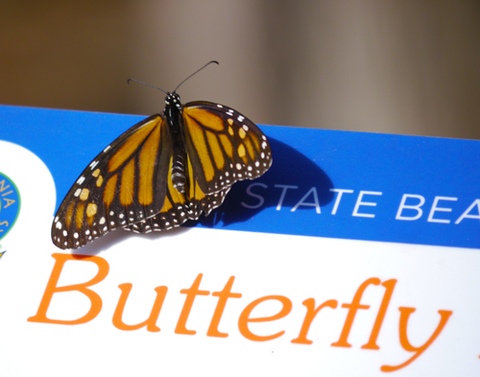
(Credit: Amit Patel via Flickr)
If you signed the Monarch Manifesto, thank you. You're part of an enthusiastic community of butterfly lovers -- more than 10,000 strong -- who are helping the monarch butterfly. (If you haven't please take a minute to do so!)
You also committed to encouraging at least one school, company, institution or faith group in your neighbourhood to grow butterfly-friendly flowers -- ideally, plant a butterfly garden next spring!
To make this task easier, below is a sample letter you can adapt. Click here to download a word document version of the same letter.
[Insert date]
[Insert your name, address, email and phone number]
[Insert institution name and address]
Re: Please help bring monarchs butterflies back from the brink
Dear [insert name],
Have you noticed there aren't as many monarch butterflies as there used to be? I remember seeing them in [insert community name] each summer. But monarch numbers have declined by 95 per cent in the past couple decades due to loss of the habitat and milkweed plants they need to survive. The good news: You can help bring monarchs back!
I live in the neighbourhood and was wondering if [insert name of school, faith group, business or institution] might be interested in helping monarchs and other butterflies by planting a butterfly garden on your property.
What's a butterfly garden? Butterfly gardens feature native flowering plants like brown-eyed Susans, asters, milkweed and coneflowers -- plants adapted to our local climate, so they're better able to handle drought and storms and will ultimately require less maintenance and watering than non-native plants. Most importantly, local butterflies prefer these flowers for food and shelter.
Got milkweed? Milkweed is the only plant monarch moms use to lay their eggs and the monarch caterpillars' main source of food. That's why the David Suzuki Foundation and many other groups are encouraging us all to plant more milkweed.
How can you help? Go to www.davidsuzuki.org/butterflygarden for resources on how to create a butterfly garden. If a garden is too ambitious, consider adding milkweed and other butterfly-friendly plants to your existing [gardens/planters/landscaping] next spring.
Thanks for your time. I hope to hear from you soon.
Sincerely,
[Insert your name]
P.S. Please count on me to help get others in our neighbourhood interested in [insert name of institution]'s butterfly garden, by providing materials and/or volunteer support to help make it happen.
Hey! Want more DSF? Join David Suzuki on Facebook

Resources for bringing butterflies back
On this page are resources to help you bring the magic of butterflies to your garden, yard and neighbourhood.
How do I make my yard butterfly-friendly?
Ten tips for monarch-friendly gardening
Xerces guide to butterfly gardening
How to go pesticide-free in your garden
What plants should I grow?
Why native plants are best
Pollinator Partnership's native guides for southern Ontario and B.C. Lower Mainland
Xerces guide to native plants for the Great Lakes region
Evergreen's native plant database
North American Native Plant Society has a list of native plant growers in Canada
Where can I find information about planting pollinator gardens at schools?
Monarch Teacher Network offers hands-on training workshops to educators and nature enthusiasts who are interested in teaching and learning with monarch butterflies
Evergreen's Greening School Grounds
Toronto District School Board's EcoSchools program
National Wildlife Federation's how-to guide for schoolyard habitats
Where can I find information for planting butterfly gardens in my community?
Check out this great guide to creating monarch habitat for community groups and gardeners
Here are community organizing tips from the Canadian Wildlife Federation
Hey! Want more DSF? Join David Suzuki on Facebook

Seven steps to help bring butterflies home
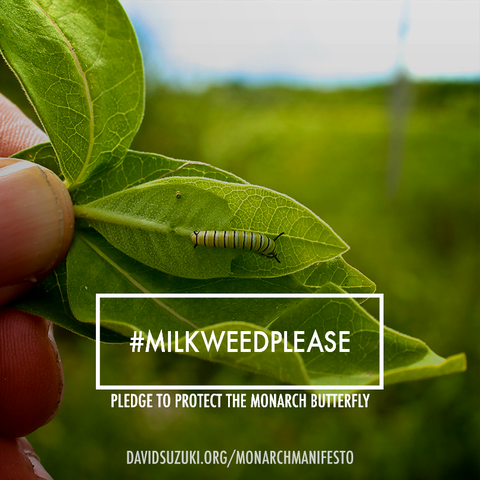
Want to help monarch butterflies? Encourage a local school, faith group, business or institution with gardens or green space to add more milkweed and butterfly-friendly plants.
Here are the seven steps to planting the seeds for growing a butterfly garden in your community:
STEP 1: Take a walk around your neighbourhood. Look for spaces that could use some love -- overgrown or empty garden beds or planters; sterile-looking, manicured turf; or corporate grounds with bland ornamental plants.
STEP 2: Drop in and say hello to the people responsible for the space. Introduce yourself as an interested neighbour and ask for the name of the person(s) you should speak to about making their space more colourful and inviting for butterflies -- and humans!
Say you were inspired by the David Suzuki Foundation's efforts to bring back monarch butterflies, because their populations have dropped by 95 per cent in the past two decades, and that there are simple actions we can all do to help, like planting milkweed and wildflowers.
Ask if there are staff or volunteers responsible for environmental or greening projects. Get names addresses/email addresses.
STEP 3: In a letter or email, invite the appropriate person(s) to join the growing international movement to create more food and shelter for monarchs and other pollinators. Here's a sample letter. Make yours as personal as possible.
STEP 4: Follow up your letter or email in a few days to ensure it got to the right person(s) and to see if there's interest in your proposal.
STEP 5: If there's interest (YAY!), send this resource page.
STEP 6: Do what you can to help nudge the process along, including spreading the news to neighbours and friends.
STEP 7: Tell us about your challenges and successes! Comment on Facebook, tweet using the #monarchmanifesto hashtag or email contact@davidsuzuki.org.
Often all it takes to get things rolling is a little inspiration, some initiative and periodic, gentle nudges to make fun, green things happen in your neighbourhood.
Together, we can bring monarch butterflies back from the brink.
Hey! Want more DSF? Join David Suzuki on Facebook

August 25, 2015
How to stop walking past garbage
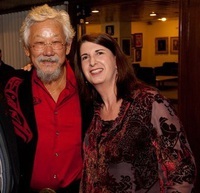
Gail knows that sometimes you have to clean up other people's messes. (Credit: Manuel Sousa)
I can't bring myself to walk past trash. And it turns out, neither can my friend, colleague and Queen of Green Coach, Gail.
I saw her on my walk to work last week -- grabber and bag of garbage in hand. Not only was I happy to see the positive impact she was making, but I knew I wasn't alone AND I could see how proud she was to follow through on a pet peeve.
Gail shares why and how she stopped walking past garbage:
I'm grateful to live in Canada. Unlike in other places in the world, our rivers aren't choked with plastic, our city dwellers don't have to wear gas masks.
Not yet.
But lately I've noticed my beautiful city (Vancouver) falling victim to a creeping scourge: street litter.
It's not my trash. Thanks to recycling and composting, my life is practically garbage-free. But I live in a human community. And sometimes that means cleaning up other people's messes.
The first time I geared up to pick up trash in earnest, my usual 50-minute walk to work took almost three hours. That first haul, I filled a large, paper (why add to the plastic nightmare?) grocery bag with candy wrappers, elastic bands, twist ties, crushed beer cans, Tim Hortons and Starbucks cups and lids, and most of all -- by number not volume -- cigarette butts. It's amazing what people drop on the street, toss out car windows, even leave in their yards.
How to do this yourself:
Have boundaries. I stick to one side of the street and bypass overwhelmingly messy places like construction sites.
Use an arm extender grabber. That way, you don't have to actually touch any trash or bend over (saving your back). Switch hands occasionally.
Find an unhurried window of time. This can be a lovely, meditative walk outside!
If you're hard pressed for time, prioritize picking up plastic.
Stop when you have to (e.g., if you have to be somewhere else) or when you've had enough.
I probably cut quite the eccentric picture, with my Tilley hat, ergonomic backpack, arm extender grabber and brimming-with-garbage bag. I get noticed. (Dogs are particularly interested.) Some humans have even thanked me.
Once upon a time, people didn't have to help fellow creatures from falling victim to our garbage. I pick up what I can so at least this plastic straw won't end up in a turtle's nostril and that plastic bag won't be swallowed by a whale.
All over the world, places currently poisoned and polluted were once pristine. I don't want that to happen here.
Do you have strategies for keeping your block, neighbourhood and city litter-free...without burning out?
Sincerely,
Lindsay Coulter, a fellow Queen of Green
Hey! Want more DSF? Join David Suzuki on Facebook
August 20, 2015
You can help bring monarchs back from the brink
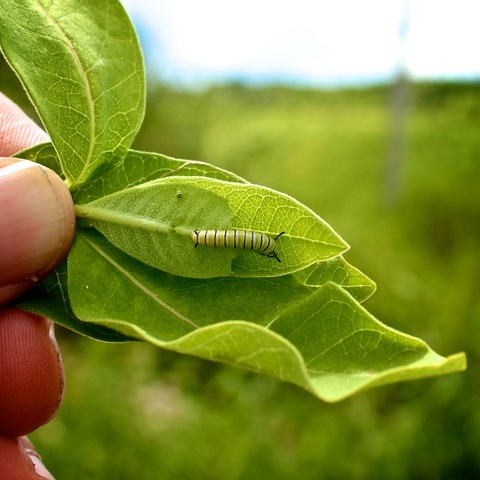
(Credit: Jode Roberts)
Jode Roberts has spent a lot of the summer checking out ditches and fields along the sides of roads, railways and trails. At first, he didn't like what he was seeing. Roberts, who is leading the David Suzuki Foundation's effort to bring monarchs back from the brink, was searching for signs that the butterflies had visited patches of milkweed plants. Despite the bleak start, he recently hit the jackpot: a half-dozen eggs and a couple of monarch caterpillars, calmly munching on milkweed leaves.
Over the past millennium, eastern monarch butterflies have migrated northward from Mexico in spring, arriving in southern Ontario, Quebec and the Maritimes in early summer, where they lay eggs on the undersides of milkweed leaves. In the following weeks, their caterpillars hatch and eat a steady milkweed diet. In late summer, they form chrysalises and undergo the amazing transformation into butterflies. They then begin fattening themselves for the arduous return to the Mexican alpine forests where they overwinter.
Concerned citizens, scientists and conservation groups were starting to think monarchs might largely be a no-show in Canada this summer. The eastern monarch population has plummeted from more than a billion butterflies in the 1990s to an estimated 35 million in 2014 -- a drop of more than 95 per cent. They bounced back to about 55 million in Mexico this past winter, but a cool start to their journey northward coupled with the virtual eradication of milkweed plants -- mainly thorough widespread use of the herbicide glyphosate (Roundup) over the past two decades -- left monarch experts wondering whether the butterflies would make it across the border this year.
The good news is that citizen scientists and backyard butterfly lovers from across the northeastern U.S. and southern Canada have reported through social media that monarch butterflies are arriving and laying a remarkable number of eggs. But it's too early to gauge whether the numbers will meet already low expectations.
While monarch enthusiasts are breathing a momentary sigh of relief, Roberts and colleagues have launched the Monarch Manifesto, encouraging people throughout the monarchs' path to pledge to do their part to ensure the butterflies continue to recover. Visit davidsuzuki.org/monarchmanifesto to sign.
Participants are asked to commit to do three simple things this summer: grow milkweed, report monarch sightings and avoid using pesticides on their properties. They also commit to two simple tasks for the fall: reach out to at least one neighbourhood school, faith group, business or other institution about planting a butterfly garden and call local garden centres or nurseries to ask them to order native milkweed plants for next spring. Manifesto signatories will receive information and tips on how to begin these conversations.
The Monarch Manifesto is part of a growing movement to bring back monarch butterflies and help other important pollinators, like honeybees and wild bees. If all goes well, we'll see thousands of participants, hundreds of new butterfly gardens and more local milkweed sources next spring.
The backyard and urban-focused campaign is bolstered by research by University of Delaware entomologist Douglas Tallamy, who found monarchs lay more eggs on garden plants than on milkweed in meadows. The campaign also complements a research project the David Suzuki Foundation will launch this fall, in partnership with University of Guelph researchers Tyler Flockhart and Ryan Norris, examining best practices for cultivating milkweed and encouraging monarch populations along rail and hydro lines, roadways and trails.
What can you do to help? An easy first step is to sign the Monarch Manifesto, which includes information on how to attract butterflies to your neighbourhood. If you already have milkweed in your garden or on your balcony, consider collecting seeds this fall and sharing them with friends and neighbours. If you don't have a garden or balcony, you can look for places where you live, work and play that could become new butterfly garden patches.
While Roberts continues his hopeful hunt for signs of monarchs this summer, I hope you'll join thousands of people who are taking action, adding pollinator-friendly plants to their yards, spurring butterfly gardens in their neighbourhoods and transforming a multitude of spaces into safe havens for bees and butterflies. Together, we can bring monarch butterflies back from the brink.
Hey! Want more DSF? Join David Suzuki on Facebook
August 19, 2015
It's time for new Canadians to vote for the environment
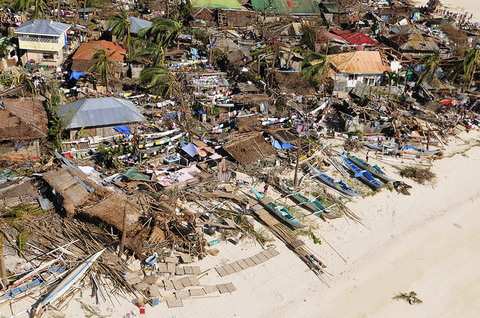
In the Philippines, recent devastating typhoons have made human vulnerability in the face of climate change (and the extreme weather it produces) a front-and-centre issue. (Credit: Mans Unides via Flickr)
Since my family immigrated to Canada from Asia three decades ago, we have been through a good number of elections. There has never been a shortage of new Canadian candidates coming to our community pitching ethnicity as a top reason to give them our vote. The logic is that new Canadian voters should vote for candidates who share the same roots.
If voting for ethnicity is the top ask from new Canadian candidates, voting for the economy is second on the list. The implied message is that a strong economy trumps all, even a healthy environment. This idea could not be more wrong. That is why I will not give away my vote for purely ethnic or economic reasons this year. I will look for the candidate with a strong environmental platform because, in the long term, voting for the environment is the only logical thing to do.
According to Citizenship and Immigration Canada, the three countries from which most immigrants to Canada came in 2013 were China (34,126) India (33,086) and the Philippines (29,539). These countries are also facing some of the toughest environmental and climate challenges in the world.
Take China. Along with the well-reported air pollution in cities like Beijing and Shanghai, decades of over-industrialization, deforestation and intensive agriculture have led to a long list of environmental issues, including desertification and groundwater contamination. According to Reuters, China's groundwater supplies irrigation to 40 per cent of the country's farmland, but an estimated 90 per cent of this water is polluted.
In India, environmental degradation is equally worrying. The Yale Environmental Performance Index and India's Central Pollution Control Board have highlighted the air pollution problem in India. In 2010, the average concentration of harmful airborne particles in 190 Indian cities was six times the World Health Organization safety level and double India's own national standards. The concentration in Delhi alone is about 13 times higher than the WHO guideline.
As for the Philippines, recent devastating typhoons have made human vulnerability in the face of climate change (and the extreme weather it produces) a front-and-centre issue. Extreme climate-related weather events are threatening the security of countries like the Philippines.
According to a 2014 Focus Canada Poll jointly conducted by the David Suzuki Foundation and Environics Institute, 60 per cent Canadians now believe climate change is real and is primarily caused by human activity. The question is whether or not this sentiment will be translated into votes for the environment.
Polls by Abacus Data show the majority of Canadian voters lean toward healthcare and job creation as their top two voting priorities. A Nanos Research study found 72 per cent of Canadians listed the economy and jobs as key issues in determining their vote. A lot has happened since these numbers were released. World oil prices have collapsed, leading to the loss of Canadian jobs. Drought has led to massive forest fires in regions historically known for an abundance of water. Voters are waking up to the idea that an unstable environment means an unstable economy.
After this long hot summer in British Columbia, my family and I will no longer take the environment -- one of the main drivers behind our decision to come to Canada -- for granted. When we breathe the fresh air and drink clean water from our taps, we must recognize these things are the result of generations of hard work.
As our population and industrial activities increase, more pressure is placed on the environment that sustains us. We must elect leaders who will ensure that development does not come at the expense of nature. As people who have survived extreme poor air quality daily and contaminated food sources, new Canadians should be the first to call for solutions to environmental degradation and climate change. Many pundits tell us this election is all about the economy, stability and jobs. Exercising our democratic rights to vote for a better environment is the first step because we have now learned that without a vibrant environment, our economy, stability and jobs suffer.
YES, I'm voting on October 19.
Hey! Want more DSF? Join David Suzuki on Facebook
August 18, 2015
Election 2015
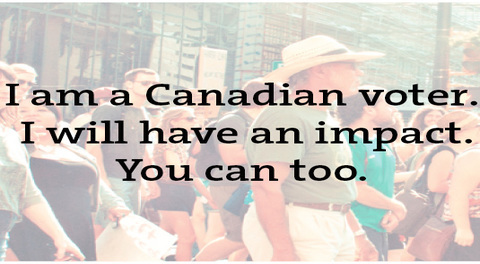
The latest news, analysis and tips on how you can make an impact this election.
Hey! Want more DSF? Join David Suzuki on Facebook
August 17, 2015
Kaitlyn celebrates her eighth by fundraising for the planet

(Credit: Kevin D.)
It takes a pretty spectacular kid to decide to forego birthday presents: Meet amazing, eight-year-old Kaitlyn!
This year, Kaitlyn asked friends and family to make donations to the David Suzuki Foundation in lieu of personal gifts to her and raised an astounding $850!
Kaitlyn has been interested in environmental stewardship for quite some time, especially in the impact of garbage and pollution on oceans and the water supply. During her research, she discovered the David Suzuki Foundation and the Blue Dot movement. She chose to fundraise to "highlight the exceptional life's work of a great Canadian and his Foundation's efforts to ensure our Earth is healthy for future generations."
Thanks Kaitlyn!
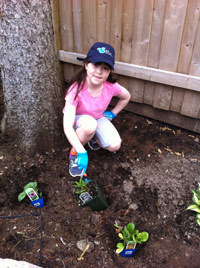
(Credit: Kevin D.)
We would like to extend our sincerest gratitude to Kaitlyn not only for her outstanding fundraising efforts but more importantly for spreading the word about protecting our fragile water supply.
You are truly inspiring, Kaitlyn!
It is easy and fun to set up a birthday party that supports the David Suzuki Foundation. For more information, check out our community fundraising page.
Hey! Want more DSF? Join David Suzuki on Facebook
David Suzuki's Blog
- David Suzuki's profile
- 247 followers



